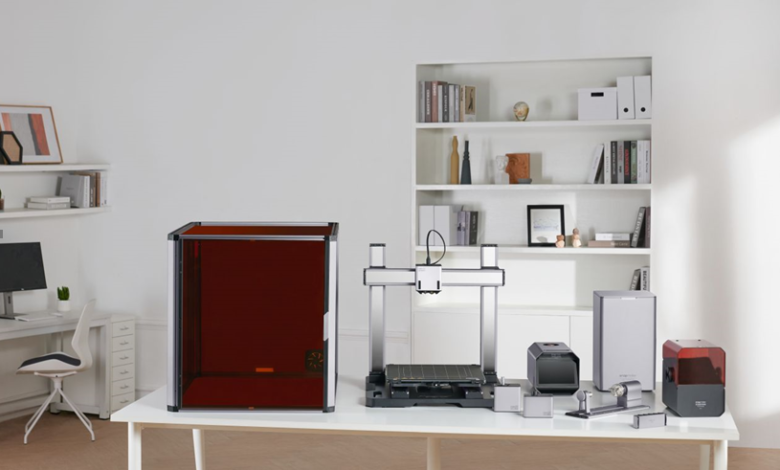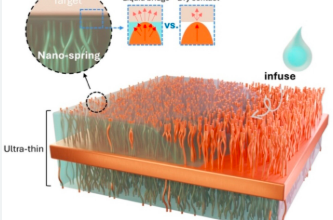Unlocking New Possibilities with High-Speed and Matte PLA Filaments

Polylactic Acid, or PLA, is undeniably the reigning champion in the world of desktop 3D printing. Its ease of use, low cost, and wide availability have made it the go-to material for hobbyists, educators, and even professionals for rapid prototyping. However, as 3D printing technology matures, the demands placed on materials are evolving. Users are increasingly seeking more than just basic functionality; they’re looking for faster print speeds without sacrificing quality, and more sophisticated aesthetic finishes straight off the print bed. This is where the next generation of 3D printer filament of PLA steps in, specifically game-changers like High-Speed PLA and Matte PLA, designed to unlock new potentials and elevate your 3D printing projects.
The Evolution from Standard PLA: Why Specialized Variants?
Standard PLA, for all its virtues, comes with certain inherent characteristics. It’s known for its relatively low printing temperature and minimal warping, making it beginner-friendly. But as users gain experience and their projects become more ambitious, the quest begins for materials that can overcome traditional limitations. The demand for filaments that can print significantly faster to reduce lengthy production times, or offer unique surface finishes to enhance visual appeal for final products or detailed models, has spurred significant innovation in material science. Manufacturers are now fine-tuning PLA formulations, creating specialized variants that cater to these advanced needs without losing the core benefits that made PLA popular in the first place.
See also: Digital Communication: The Power of Chatutnste & Technology
Deep Dive: High-Speed PLA – Printing in the Fast Lane
One of the most exciting advancements in PLA technology is the development of High-Speed PLA. As the name suggests, this filament is engineered to perform exceptionally well at significantly higher printing speeds than its standard counterpart.
What is High-Speed PLA? High-Speed PLA is typically formulated with a modified melt flow index (MFI) and often includes specific additives that enhance its fluidity and thermal conductivity. This allows the filament to melt faster and flow more easily through the nozzle, even when the extruder is moving at high velocities. Unlike some materials that might under-extrude or show poor layer adhesion when pushed to faster speeds, High-Speed PLA is designed to maintain structural integrity and print quality. Some formulations might also boast improved cooling characteristics, crucial for quickly solidifying layers at an accelerated pace.
Key Benefits: The primary advantage is, of course, a drastic reduction in print times. Depending on the specific filament and printer capabilities, users can experience prints completing up to 3-5 times faster, or even more with printers specifically designed for speed. This isn’t just about saving a few minutes; it can mean the difference between completing a project in a day versus several. Furthermore, well-formulated High-Speed PLAs achieve this speed while maintaining good layer adhesion and print quality, minimizing the traditional trade-off between speed and detail. Some variants may also offer slightly improved impact resistance or toughness compared to brittle standard PLAs.
Ideal Use-Cases: High-Speed PLA is a perfect match for:
- Rapid Prototyping: Iterate through designs much faster.
- Large Volume Prints: Tackle those big projects without the week-long print times.
- Functional Parts: When speed of production is a critical factor for jigs, fixtures, or custom components.
- Educational Settings: Allow more students to complete projects within limited class time.
- Print Farms: Increase throughput and efficiency significantly.
Printing Considerations & Tips: While High-Speed PLA is designed for speed, simply cranking up the velocity dial isn’t the only step. To get the best results:
- Printer Compatibility: Ensure your 3D printer can handle it. A rigid frame, a capable hotend (some high-flow hotends excel here), and efficient part cooling are beneficial. Direct drive extruders often handle rapid movements and retractions better than Bowden setups, though many Bowden printers can still benefit.
- Slicer Settings: You’ll need to tune your slicer. Increase print speeds for infill, walls, and top/bottom layers. Crucially, also adjust acceleration and jerk settings – these control how quickly the print head changes speed and direction. Nozzle temperatures might need to be slightly higher to ensure proper melting at increased flow rates. Retraction settings will also need careful calibration to prevent stringing.
- Cooling: Robust part cooling is essential to solidify the filament quickly as it’s extruded at high speeds. Ensure your cooling fans are effective and properly directed.
High-Speed vs. Matte PLA: Choosing the Right Tool for the Job
So, when do you reach for High-Speed PLA, and when is Matte PLA the better option? The choice largely depends on your project’s primary objective.
- Choose High-Speed PLA if: Your main priority is rapid production, quick iterations, printing very large objects, or maximizing throughput. Functionality and speed trump final surface aesthetics.
- Choose Matte PLA if: The visual appeal, surface finish, and professional look of the final print are paramount. You need to minimize layer lines and achieve a non-reflective surface for display pieces, artistic creations, or consumer-facing prototypes.
It’s not always an either/or scenario. For complex projects, one could even envision using High-Speed PLA for internal structures or initial drafts and then printing the final, visible exterior shells in Matte PLA if the design allows for multi-part assembly, though this is a more advanced approach. Ultimately, these filaments offer distinct advantages for different needs.
The Expanding Universe of PLA
High-Speed PLA and Matte PLA are just two examples of the incredible innovation happening within the PLA family. The market is now rich with other specialized variants like PLA+ (offering improved toughness), Silk PLA (for a vibrant, glossy, almost metallic sheen), and even composite PLAs blended with wood fibers, carbon fiber, or metal powders to achieve unique properties and aesthetics. This continuous development underscores PLA’s versatility and its capacity to adapt to the ever-growing demands of the 3D printing community. The future likely holds even more exciting PLA formulations, pushing the boundaries of what’s possible with this humble bioplastic.
Conclusion: Elevate Your Prints with Specialized PLAs
Standard PLA will always have its place, but for those looking to push their 3D printing projects to the next level, exploring specialized variants like High-Speed PLA and Matte PLA is a must. Whether you need to slash print times for rapid prototyping or achieve a flawless, professional finish for your display pieces, these advanced filaments offer tangible benefits and open up a new realm of possibilities. By understanding their unique characteristics and optimizing your printing approach, you can harness their power to create stronger, faster, and more visually stunning 3D prints than ever before.




